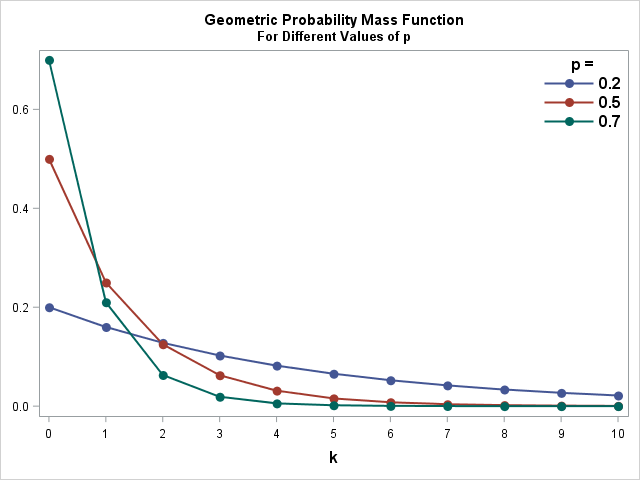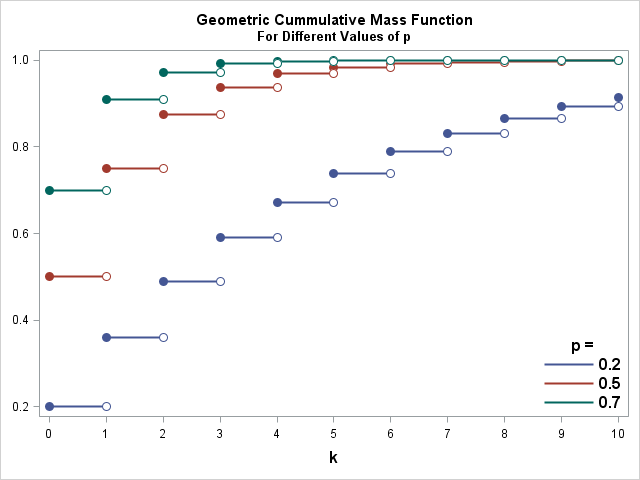![]()
![]()
Here, ![]()
![]()
![]()
![]()
![]()
![]()
![]()
![]()
![]()
![]()
![]()
![]()
![]()
![]()
![]()
Here, ![]()
![]()
![]()
![]()
![]()
![]()
![]()
![]()
Obviously, the Probability Mass Function is strictly decreasing. You can see from the plotted Probability Mass Functions and corresponding Cumulative Mass Functions plotted to the right. Here, I have plotted three different PMF curves for three different values of ![]()
![]()
![]()
![]()
![]()
![]()
The Geometric Distribution is a special case of the Negative Binomial Distribution. Recall that the Negative Binomial Distribution models the probability of the number of observing exactly ![]()
![]()
![]()
![]()
![]()
![]()
![]()
![]()
![]()
![]()




Geometric SAS Code Example
Finally, I have written a small SAS program, that lets you set different values of success probability ![]()
![]()
![]()
![]()
![]()
![]()
![]()
![]()
![]()
![]()
![]()
![]()
%let p=0.9; /* Geometric Probability Mass Function Data */ data Geometric_PMF; do k=0 to 10; pmf=pdf('geometric', k, &p); output; end; run; /* Draw Geometric PMF Curve */ title "Geometric Probability Mass Function for p=&p"; proc sgplot data=Geometric_PMF noautolegend; series x=k y=pmf / markers lineattrs=(thickness=2) markerattrs=(size=10 symbol=circlefilled); xaxis values=(0 to 10) label='k' labelattrs=(size=12 weight=Bold); yaxis display=(nolabel); keylegend / titleattrs=(Size=12 Weight=Bold) position=NE location=inside across=1 noborder valueattrs=(Size=12 Weight=Bold); run; title; |
